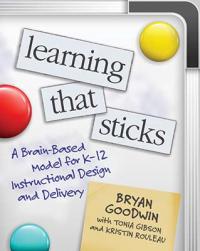
My earlier posts in this series shared ways to help remote learners engage in the first two phases of learning—become interested and commit to learning. Now that your students are ready to learn, how can you help them focus on new knowledge or skills?
For many teachers, this aspect of remote learning—what often seems like the actual teaching part—is often the most challenging aspect, especially as many tried-and-true strategies for holding student interest during in-person learning—watching faces to check for understanding, standing near distracted students to redirect focus, and creating learning centers to support individualized instruction—have all gone out the window.
Fortunately, two key concepts from the science of learning point to ways that remote learning can be as, if not more effective than, in-person.
Here’s the first one: As humans, we learn better when we receive information both visually and verbally—for example, when we
- see a process modeled and hear it described
- see a compelling image and hear it explained, or
- learn an abstract idea illustrated with concrete, visual examples
And here’s the second: We really only learn what we think about. New learning is more apt to stick when our brains actively engage with it as we receive it—for example,
- answering questions that help us check our understanding and summarize new learning
- taking notes—sorting, arranging, and synthesizing information with hand-written notes
- thinking aloud during initial efforts to develop a new skill
Drawing upon these two key concepts, here are some tips to help remote learners focus on new learning by engaging verbally and visually with it as well as thinking about it:
- Create (or curate) instructional videos. Remote learning lends itself nicely to “flipped” lessons—brief instructional videos that engage students in simultaneous visual and verbal learning by watching a process as it’s explained or seeing a scientific concept illustrated as it’s described. The key idea here is to not simply talk at students, but rather, to use videos to show and tell them what they should learn. Certainly, you can also deliver some “live” instructional videos—for example, using online drawing tools to demonstrate steps for solving math equations or diagramming sentences. Ideally, though, you could record and archive these videos so students can return to them later if they’re feeling stuck. Because so many high-quality teaching videos are already freely available (through such platforms as Khan Academy), you may find it more productive to curate effective videos and spend more of your own time coaching and facilitating students after they watch the videos.
- Help students engage in self-questioning during independent reading. Not all learning requires teaching, of course. Nor does all remote learning require screen time. Numerous studies show that students learn a great deal through independent reading, especially if they know how to employ self-questioning strategies. Once such approach is the RAP strategy: students read a paragraph, ask themselves about the main ideas and details, and paraphrase. At first, you may need to model this or another self-questioning strategy for students, but studies show that with minimal training (90 minutes or so), students begin to internalize these strategies as they engage in reading as well as listening to classroom lectures.
- Encourage students to create learning journals. Numerous studies find note-taking supports better learning, but only when students take notes by hand. Research also shows that incorporating drawings in class notes has a powerful effect on learning. Although it’s not entirely clear why handwritten notes or drawings are so effective, it’s likely that writing and drawing by hand simultaneously engages both the verbal and visual portions of students’ brains and encourages them to think more deeply about what they’re learning. So, in any subject area, encourage students to take detailed, illustrated notes; for example, creating scientific or literary journals. At first, you may need to show students how to take good notes—how to extract key ideas from a lecture, video, or classroom discussion and arrange those ideas into coherent bullet points. The key idea here is that notetaking, drawing and journaling help students become active, not passive, participants in learning.
All of these strategies reflect a final, big idea from the science of learning: Due to the natural limitations of our working memories, we learn best in short bursts (roughly 5 minutes, give or take a few). Basically, we learn much like we eat—by taking small bites of information and chewing on them for a while. I’ll explore this idea further—and what it looks like for remote learners—in my next post.

